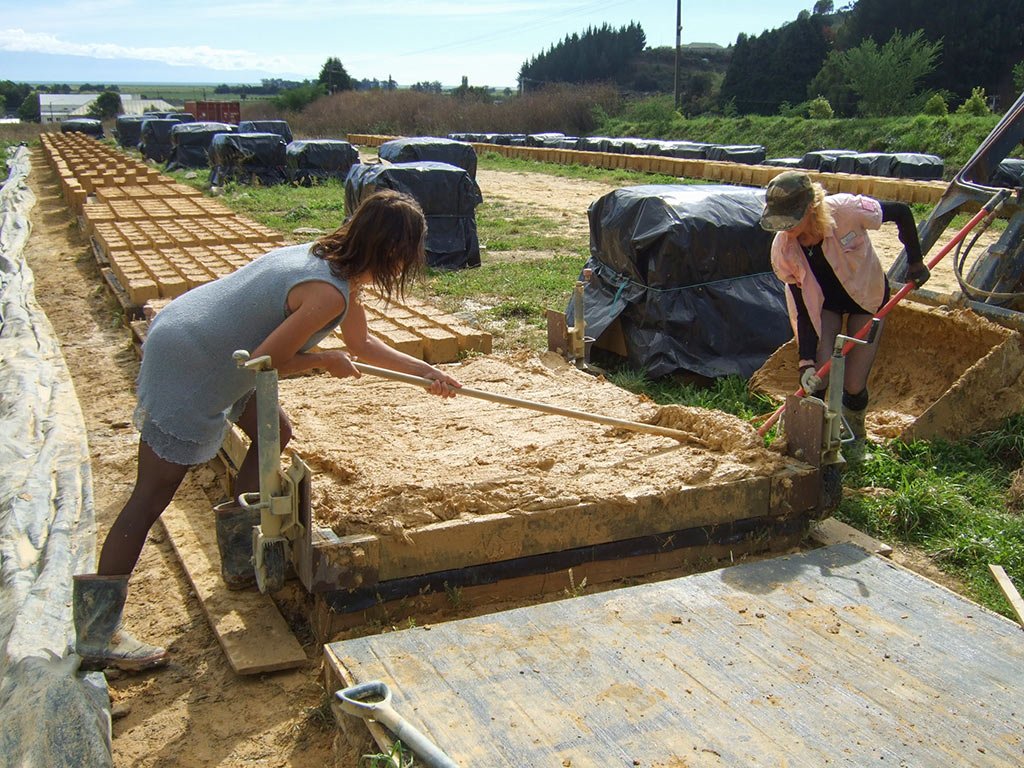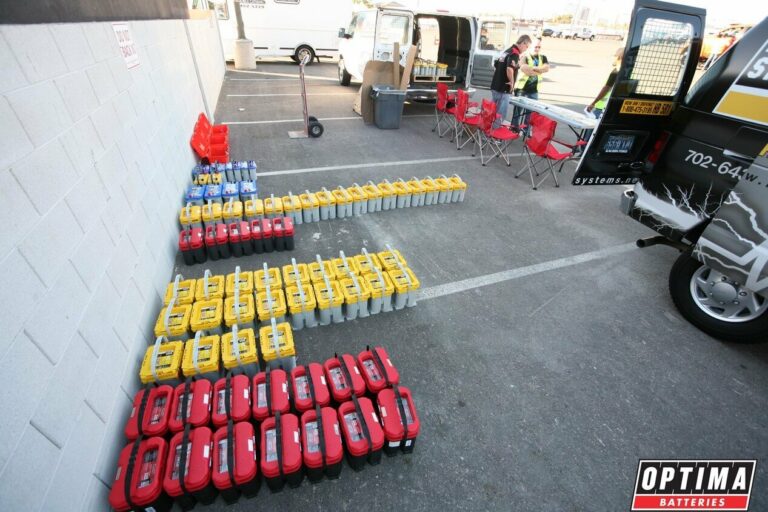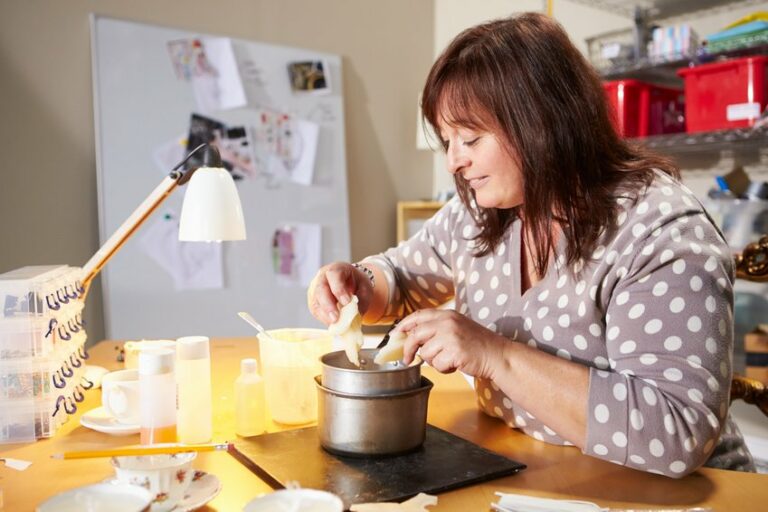How To Make Adobe Bricks: A Step-By-Step Guide
If you’ve ever wondered how to make adobe bricks, you’re in the right place! Adobe bricks are an ancient building material made from a mixture of clay, sand, and organic matter. They are known for their durability and thermal properties, making them a popular choice for construction in many regions around the world. In this article, we’ll walk you through the step-by-step process of creating adobe bricks, from sourcing the materials to drying and stacking your finished product. Get ready to roll up your sleeves and bring your creative vision to life with this simple yet fascinating technique. Let’s dive in!
How Do You Make Adobe Bricks?
Adobe bricks are versatile building materials that have been used for centuries in various regions around the world. Made from a mixture of clay, sand, water, and sometimes organic materials, adobe bricks offer natural insulation, durability, and sustainability. If you’re curious about the process of making adobe bricks, this comprehensive guide will walk you through the steps, materials, and techniques involved.
Gathering the Materials
Before jumping into the brick-making process, it’s essential to ensure you have all the necessary materials. Gathering these materials will make the brick-making process smoother and more efficient. Here’s what you’ll need:
- Clay: The primary component of adobe bricks is clay. Look for clay that is free of impurities and contaminants. The clay should have a pliable consistency, easily molded by hand.
- Sand: To enhance the structural integrity of your bricks, you’ll need sand. Opt for sand with fine particles, as this will help bind the clay together.
- Water: Adequate water is required to create the right consistency for your adobe mixture. The water should be clean and free from any chemicals.
- Organic materials (optional): Some builders add organic materials like straw or animal dung to their adobe mixture to improve its strength and prevent cracking.
- Tools: Gather basic tools such as shovels, buckets, a wheelbarrow, a mixing trough, and a brick mold.
Preparing the Clay
Before you start making the adobe bricks, it’s important to prepare the clay properly. Follow these steps to ensure the clay is in the right condition for molding:
- Excavate the clay: Dig up the clay from a suitable source, making sure you collect it from below the topsoil layer. Excavate enough clay to produce the desired number of bricks.
- Remove impurities: Remove any debris, rocks, or large particles from the clay. These impurities can weaken the adobe bricks and affect their structural integrity.
- Soak the clay: Place the clay in a large container or trough and cover it with water. Let it soak for several days to soften the clay and make it easier to work with.
- Stir the clay: Stir the clay regularly during the soaking period to encourage an even distribution of moisture. This will help eliminate dry pockets within the clay.
- Test the clay: Once the clay has soaked long enough, perform a simple squeeze test to check its consistency. The clay should have a pliable texture that holds its shape when squeezed.
Mixing the Adobe Mixture
Now that you have prepared the clay, it’s time to mix the adobe mixture. The adobe mixture combines the clay, sand, water, and optional organic materials to create a workable substance for brick formation. Follow these steps to achieve the right consistency:
- Measure the clay and sand: Determine the desired ratio of clay to sand based on your specific project requirements. A common ratio is around 30% clay and 70% sand. Use a shovel or bucket to measure equal parts of clay and sand.
- Combine the materials: Transfer the measured clay and sand into a mixing trough or wheelbarrow. Mix the dry materials thoroughly until they are evenly distributed.
- Add water gradually: Slowly add water to the mixture while continuously mixing. Use your hands or a shovel to blend the water into the clay and sand until you achieve a thick, moldable consistency. Avoid adding too much water, as this can make the mixture too runny.
- Optional: Add organic materials: If you choose to incorporate organic materials into your adobe mixture, this is the time to do so. Mix the organic materials, such as straw or animal dung, into the clay and sand mixture. This step adds strength and prevents cracking.
- Continue mixing: Keep mixing the adobe mixture until all the components are completely blended. The mixture should have a uniform texture and be easy to mold without crumbling.
Molding and Drying the Bricks
Once you have prepared the adobe mixture, it’s time to mold the bricks. The molding process is crucial as it determines the size, shape, and overall quality of the bricks. Follow these steps to mold and dry the adobe bricks:
- Prepare the brick mold: Use a brick mold with the desired dimensions for your bricks. Ensure the mold is clean and free from any debris.
- Fill the mold: Scoop the adobe mixture into the brick mold, pressing it firmly to eliminate any air pockets. Fill the mold completely, ensuring the mixture is level at the top.
- Remove excess mixture: Scrape off any excess adobe mixture from the top of the mold using a straight edge or trowel. This will ensure a smooth and even surface for the brick.
- Release the brick: Carefully remove the brick from the mold by gently tapping the sides or inverting the mold. Avoid applying excessive force, as this may result in the brick losing its shape.
- Place the brick to dry: Set the molded brick aside in a dry, shaded area to dry. Avoid direct sunlight, as it can cause the brick to dry too quickly and crack. Allow the bricks to air dry for several weeks, turning them occasionally to ensure even drying.
- Cure the bricks: After the bricks have air-dried, they need to be cured to further strengthen them. Stack the bricks in a sheltered area, protecting them from moisture. Leave the bricks to cure for at least two to four weeks before using them for construction.
Using Adobe Bricks for Construction
Once your adobe bricks are fully cured, they are ready to be used for construction projects. Here are a few tips for using adobe bricks effectively:
- Prepare the foundation: Ensure the foundation is level, stable, and able to support the weight of the adobe bricks. Proper preparation of the foundation is crucial for the longevity of the construction.
- Use mortar: To enhance the stability and strength of the construction, mortar can be used between the adobe bricks. Mortar helps bond the bricks together and prevents moisture intrusion.
- Consider reinforcement: For larger structures or regions prone to seismic activity, incorporating reinforcing materials such as rebar or bamboo can increase the structural integrity of the adobe construction.
- Apply protective coatings: To increase the durability of the adobe bricks and protect them from weathering, consider applying a protective coating such as lime wash or sealant.
Making adobe bricks is a traditional and sustainable construction practice that can be both fun and practical. By gathering the right materials, preparing the clay, mixing the adobe mixture, and molding and drying the bricks, you can create your own environmentally friendly building materials. Whether you’re constructing a small garden wall or a larger sustainable home, adobe bricks offer a cost-effective and eco-friendly solution. Experiment with different mixtures and techniques to find what works best for your project, and enjoy the process of creating something truly unique and long-lasting.
Adobe in Action’s Adobe Brickmaking Process
Frequently Asked Questions
How do you make adobe bricks?
Making adobe bricks involves a straightforward process that dates back thousands of years. Here are the steps:
What materials are needed to make adobe bricks?
To make adobe bricks, you will need a mixture of clay, sand, straw (or other organic materials), and water. The proportions are typically 30-70% clay, 30-50% sand, and a small amount of straw for added strength.
How do you prepare the materials for making adobe bricks?
To prepare the materials, sift the clay to remove any rocks or debris, and then mix it with the sand and straw. Gradually add water while kneading the mixture until it becomes a consistent, workable blend.
What is the process for molding adobe bricks?
Moisten the mold or form to prevent sticking, then firmly pack the adobe mixture into it. Smooth the surface and remove any excess material. Repeat this process for each brick, ensuring uniformity in size and shape.
How do you dry adobe bricks?
Place the molded bricks in a shaded area with good air circulation to dry. It is essential to keep them protected from rain or excessive moisture during this drying process. Allow the bricks to air dry for approximately one to two weeks, turning them periodically to ensure even drying.
Can adobe bricks be strengthened or stabilized?
Yes, adobe bricks can be strengthened or stabilized by adding additives to the mixture. Common additives include cement, lime, or asphalt emulsion, which enhance the durability and resistance of the bricks.
What should be considered when using adobe bricks for construction?
When using adobe bricks for construction, it’s important to consider their load-bearing capacity, vulnerability to moisture, and weathering. Proper design, adequate foundation, and appropriate protective measures, such as plastering or sealing, should be employed to ensure the longevity and structural integrity of adobe-based structures.
Final Thoughts
To conclude, making adobe bricks is a straightforward process that involves a few essential steps. First, soil is collected and mixed with water to create a workable clay mixture. Next, the clay is shaped into bricks and left to dry in the sun. Once sufficiently dried, the bricks are stacked and cured for a few weeks to increase their strength and durability. Finally, they are ready to be used in construction projects. So, if you’re wondering how do you make adobe bricks, simply follow these steps and you’ll be able to create your own sustainable building materials.






